This Is How Humanitarian Telecoms Hubs Are Racing to Beat COVID-19

Information saves lives when global health is on the line. The United Nations World Food Programme’s (WFP) Emergency Telecommunications Cluster is building up its pandemic response – drawing on 15 years of large-scale emergency experience.
Trust is one of the most important weapons in an epidemic. Rumors and conspiracy theories can go viral during an outbreak and each one should be rebutted by credible scientific sources. When it comes to affected populations, it’s a race between facts and fear.
“The importance of communication cannot be overemphasized — and I’m talking about the technical means and modes as well as the messaging,” says Hlewkiwe Kachali, Coordinator in the Pacific Islands for the Emergency Telecommunications Cluster (ETC) — a network of organizations, led by WFP’s pooling communications services in humanitarian emergencies.
“Technology itself doesn’t do anything for you. It’s how you use it that makes all the difference.”
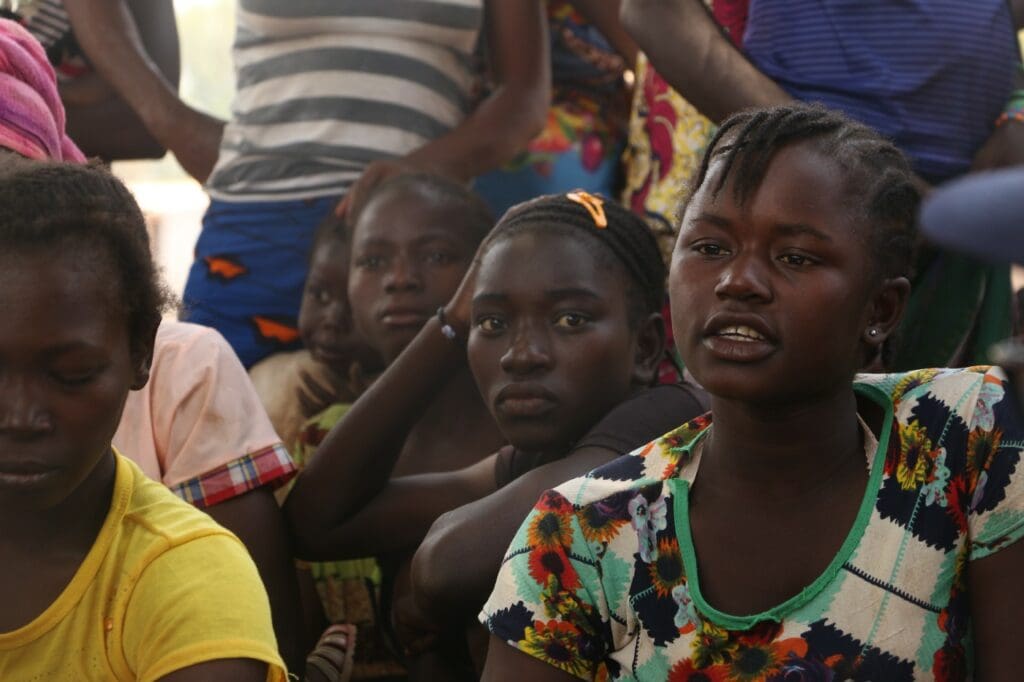
Women in a camp for internally displaced people in Bangassou, Central African Republic.
The ETC knows its pandemic response will be different from anything it has seen before, and that communications connectivity has never been more crucial in humanitarian response.
“The complexity of this global emergency has revealed a new dynamic in terms of scaling up technology,” says Enrica Porcari, ETC chair and WFP’s Chief Information Officer and Director of Technology. “With growing restrictions on movement, the humanitarian sector relies even more heavily on communications technology to maintain existing operations and respond to COVID-19,” she adds.
This pandemic is bringing wealthy countries with robust health systems to their knees. What, then, is the solution for shielding less developed countries who simply don’t have the clean running water, hospital beds or ventilators to contend with this virus?
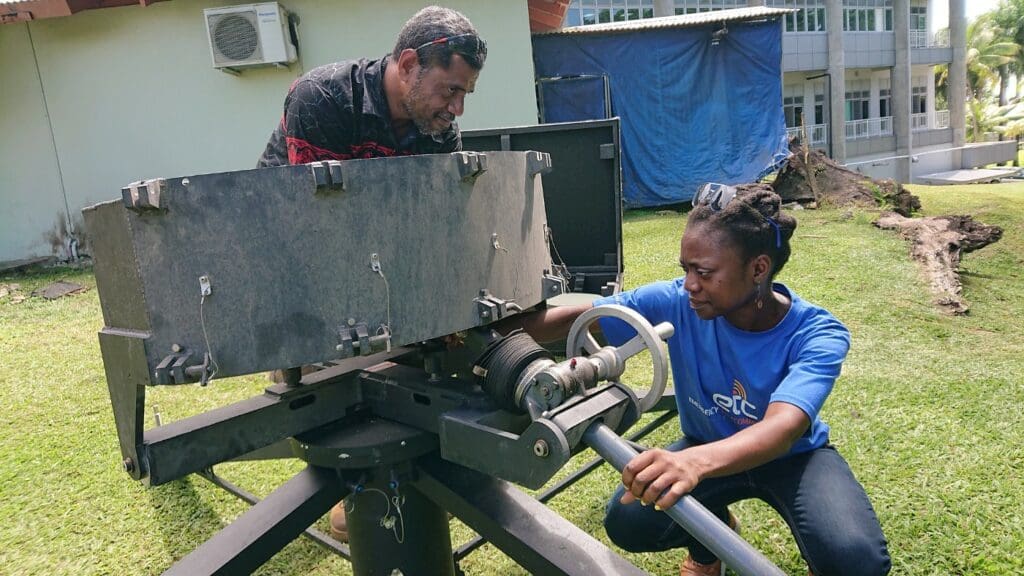
Hlekiwe Kachali, right, tests a quick-deployment satellite kit in Suva, Fiji, last November.
Communicating risk is key and requires culturally sensitive messages; failing to resonate with affected populations can be disastrous.
“Lack of awareness and information about COVID-19 can weaken social cohesion and spur violence, discrimination, marginalization and xenophobia,” the Inter-Agency Standing Committee has warned.
Building trust over fear
Risk communication — the real-time flow of information between health authorities, experts and the vulnerable populations — makes the difference between people being motivated to protect themselves or not.
Public alarm and mistrust of authority are a dangerous combination — one that can lead to “outrage [that] may give rise to stigma, reducing detection of infections people and therefore reducing the intensity of individual and societal responses,” as a recent report in The Lancet put it. Once the infection curve begins to flatten, there is then the risk that people will stop respecting public health bodies.
In 2014, dealing with “misinformation, panic and fear” were some of the main social challenges during West Africa’s Ebola outbreak.
Risk communication and public health lessons were learned from Ebola, but COVID-19 is a much different disease when considering the economic implications of keeping it contained.
The coronavirus is far easier to contract than Ebola and more insidious in that it travels easily through sneezes and coughs, can be carried by people who are asymptomatic, and incubates in a patient for up to 14 days.
Measures such as social distancing, shuttering businesses and closing borders can especially harm people in countries where the informal economy accounts for more than half the workforce (that’s 85% in Africa, 68.2 % in Asia and the Pacific and 68.6 % in the Arab States).
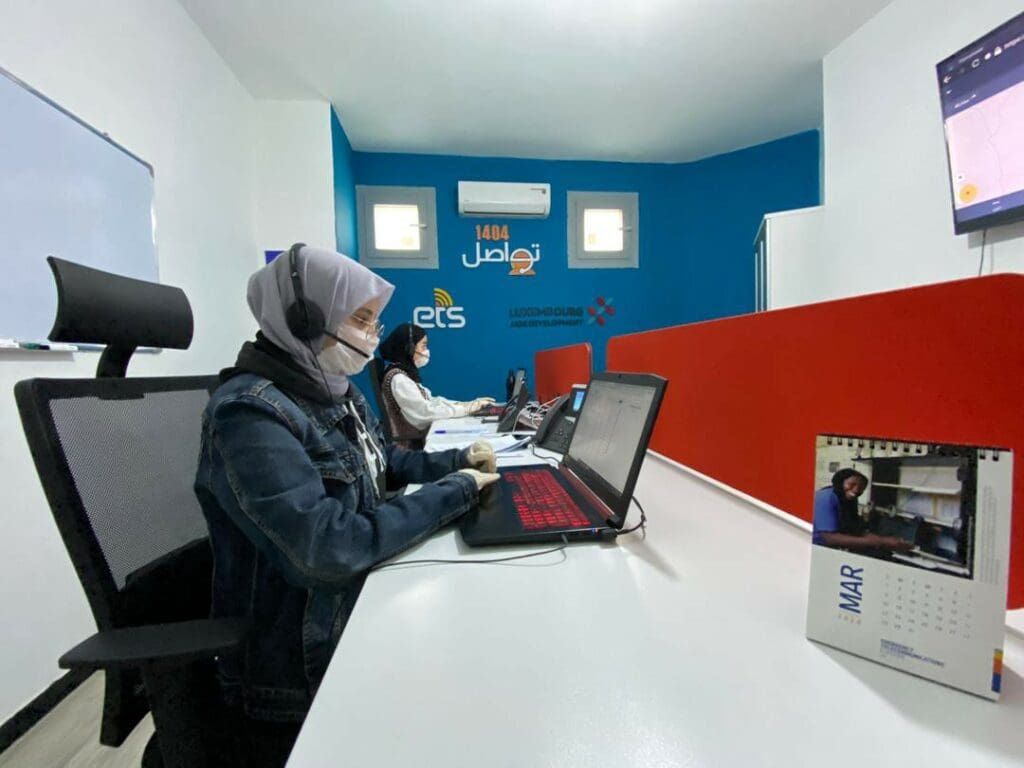
Operators at the COVID-19 call center for Libya, run by WFP’s Emergency Telecommunications Sector.
It’s a fine balance between limiting the spread of disease and completely crushing peoples’ livelihoods, opening the very real threat of acute hunger.
John Nkengasong of the Africa Center for Disease Control describes COVID-19 as “a national security crisis first, an economic crisis second and a health crisis third.”
Communicate rapidly, regularly and transparently with populations and consider community engagement as a critical public health intervention: This is the broad guidance from the World Health Organization (WHO) for addressing the COVID-19 pandemic in countries all over the world.
Adapting to serve
The last four weeks have been busy for the ETC’s Hlekiwe Kachali. She’s been working with the Joint Incident Management Team set up by the WHO to prepare 21 different Island nations and territories — some of which have up to 900 smaller islands within their jurisdictions — to prepare for COVID-19.
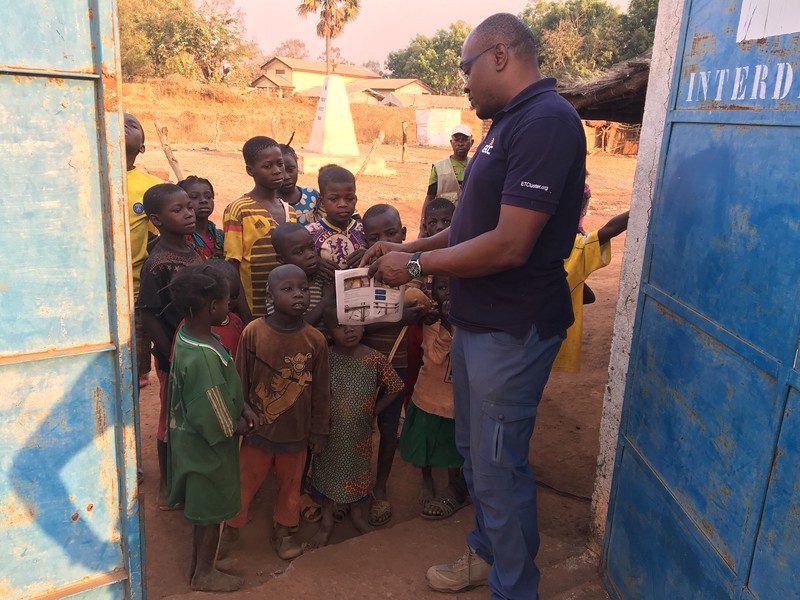
ETC’s Sylvain Tiako talks to group of children in Batangafo, Central African Republic, in January.
The ETC in the Pacific normally covers 12 island nations, but the cluster’s work has extended to all 21 nations and territories to meet the unprecedented demands of the health emergency.
“I have called almost every country and territory and had a strategic planning session with each one,” says Hlekiwe, “because as much as they are all Pacific Islanders, their needs and responses are quite different.”
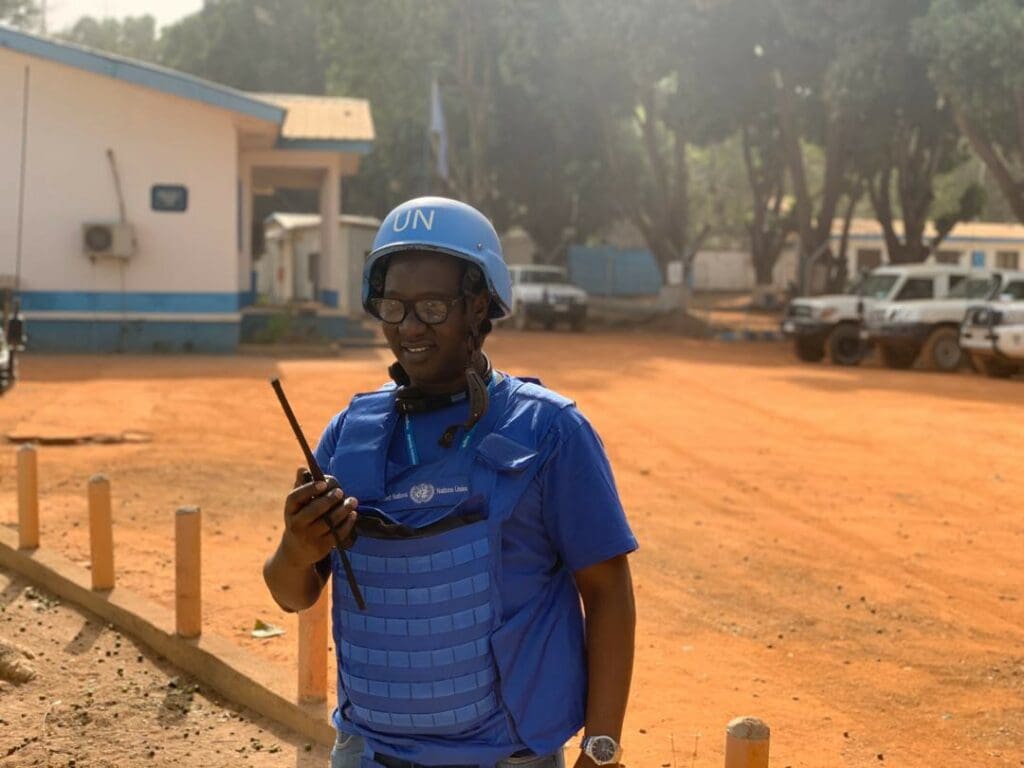
Mohamedou Ndiath is ETC Coordinator for the Central African Republic in Bria.
One of the key public health messages in this pandemic has been, if you are not feeling well, call in rather than come in. “What we have tried to do through the national counterparts, because we cannot deploy, is to ensure that not having credit, not having a phone, should not be barriers to people being served, or getting help and interacting with health authorities,” says Hlewkie.
Three-digit hotlines have been set up for people to access information about COVID-19. These are much easier to remember than seven digits and are also more useful for risk communications, advocacy and awareness campaigns.
Creating a corona hotline
In Libya, the Emergency Telecommunications Sector runs a call center known as Tawasul — meaning ‘dialogue’ in Arabic — which is serving as a country-wide information point. As years of conflict have weakened the health system, there are worries about the consequences of a disease outbreak.
In light of this pandemic, the ETS is now collaborating with Libya’s Ministry of Health to run its official COVID-19 information channel through its call center; in the second half of March and first week of this month, the center answered 4,239 COVID-related calls. The majority of callers were looking for more information about the virus, while others wanted to confirm their symptoms.
Call centers such as Tawasul have the added function of letting humanitarians know what affected populations need; this feedback has a direct impact on programming decisions.
“Using the common feedback mechanism number as a COVID-19 information hotline serves its purpose exactly: To work with Libya to facilitate information flow from both sides — from the National Center for Disease Control so people have easy access to the information they need to fight COVID-D,” says Samer Abdel Jaber, Country Director for WFP Libya. “And for the people to be able to express the support they require. That way, we also better know how to respond as humanitarian agencies.”
Reaching communities
The ETC is now building public communication infrastructure in another high-risk country: the Central African Republic (CAR). Landlocked, poor and facing ongoing conflict, CAR has camps of internally displaced people who are entitled to essential health information during this pandemic. As in the Pacific Islands and Libya, the Cluster — in its capacity as first-responder for technology support — is customizing a toll-free helpline to make this information exchange happen.
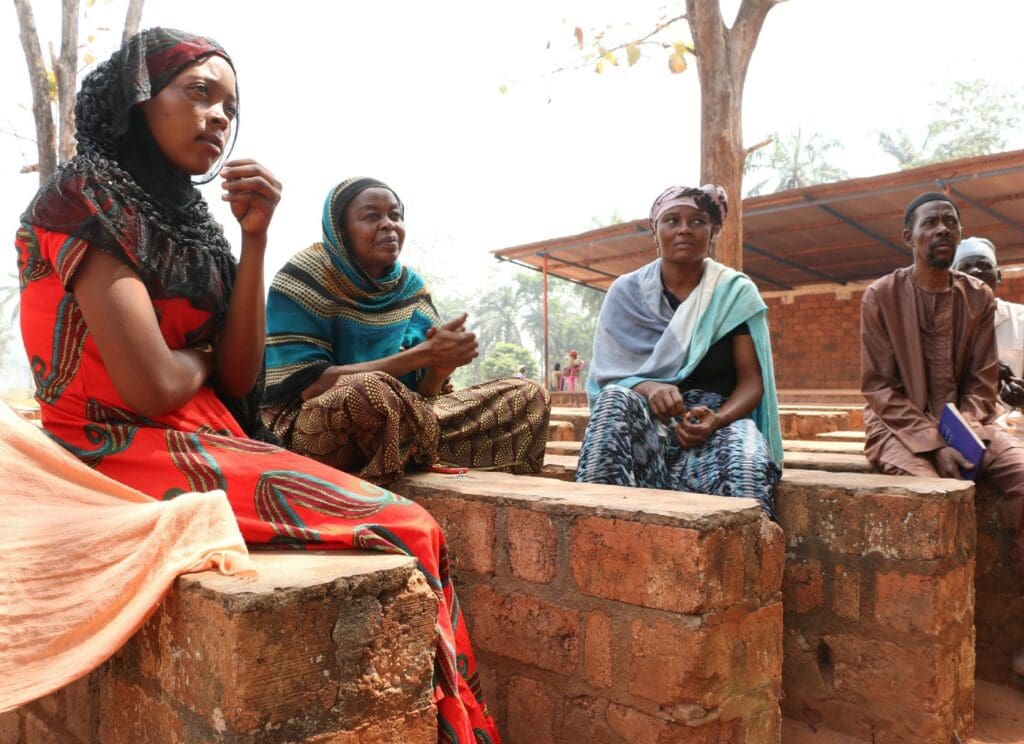
People gather in a camp for internally displaced people in Bangassou, Central African Republic.
“Community-based solutions that make transparent and credible health information accessible during a pandemic are particularly crucial for internally displaced people in CAR,” says Mohamedou Ndiath, ETC Coordinator for the country. “Without access to a strong health system, it is vital that we make sure people are informed and prepared. We are working with the Ministry of Health to open these call centers as soon as possible to help people make informed decisions about their own health and the health of their community.”
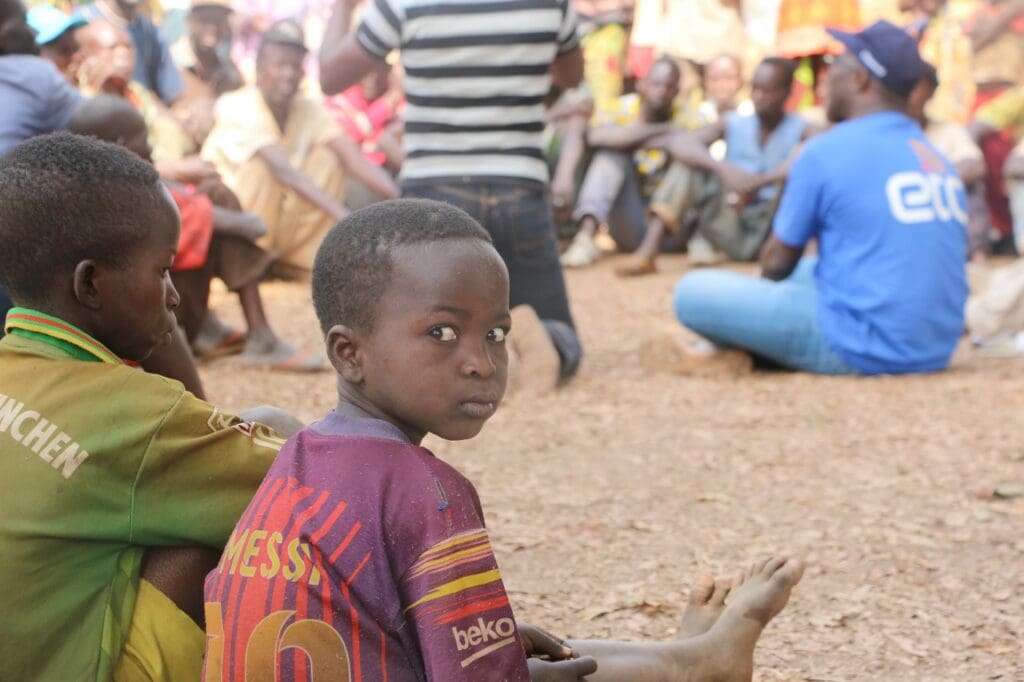
Meeting with people is essential to the ETC’s success with community-based communications work.
Reaching communities early and consistently, countering misinformation, building trust and communicating in a culturally relevant way are some tactics to mitigate risk among affected populations. The socioeconomic impacts of this pandemic run deep, but the reverberations will be felt hardest by countries that are already facing humanitarian struggles. In the interest of global health and security, developed countries should take heed of this disparity and support risk communications with and for the world’s most vulnerable.
Click here to donate and help the World Food Program save lives.
This story was written by Emma Wadland and originally appeared on WFP’s Insights.




